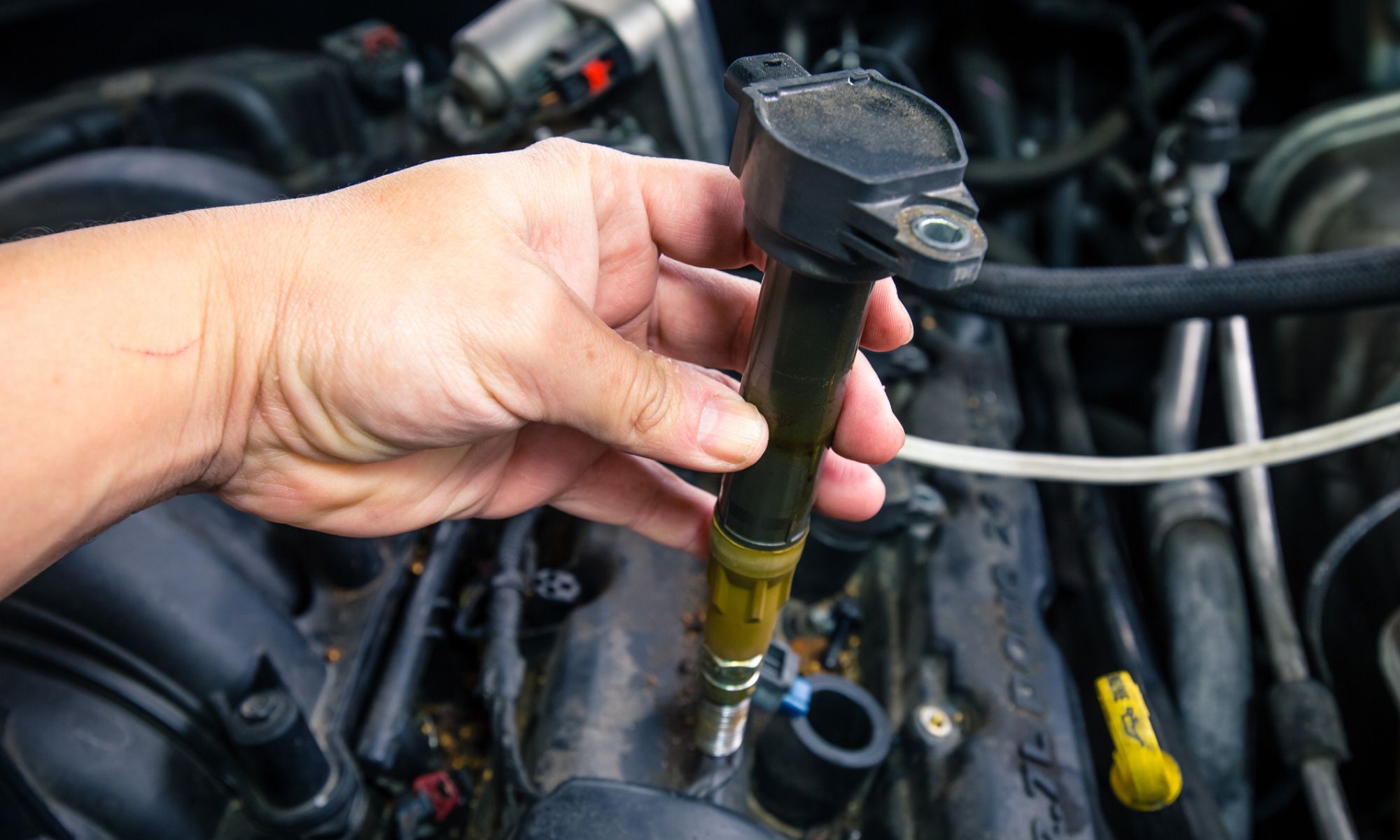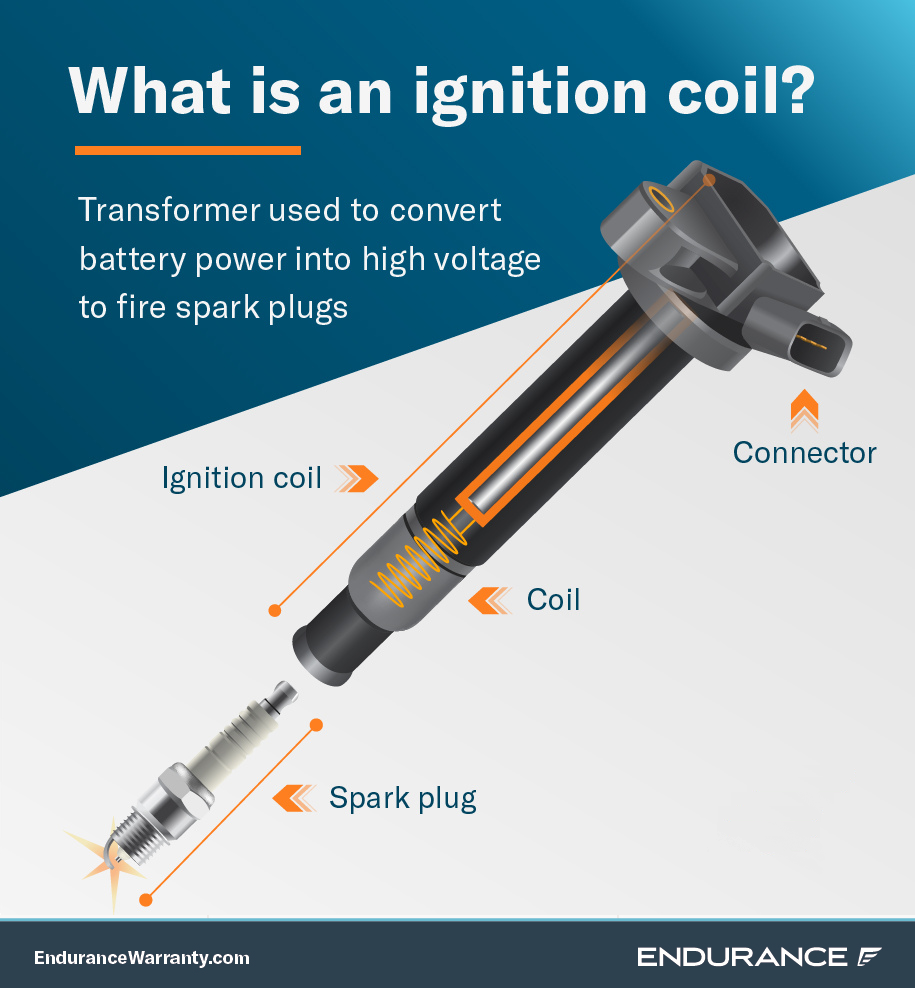What Is an Ignition Coil?

Learning more about how to care for your vehicle is key to being a better car owner. While you don’t have to know how to rebuild your engine on the side of the road, basic repair skills can help you keep your car running smoothly and maintain your fuel economy.
You can also reduce the chances of an unexpected breakdown by performing preventive maintenance throughout the year. Simple tasks such as checking your tire’s PSI, changing your air filter, and replacing your essential parts will ensure your vehicle runs at its best. The first step to car maintenance is learning what specific parts do and how to repair or replace them. So, let’s look at what an ignition coil is and review the easy steps of replacing one.
What Are Ignition Coils?
In order for your engine to operate, it needs three things for combustion – air, fuel, and spark. The air is brought in by your air intake system, which passes through a filter to ensure your engine gets only clean air. The fuel is delivered from your gas tank to fuel injectors, which spray fuel into your combustion chamber and mixes with the air and spark. The spark comes from your spark plugs which get its power from ignition coils.
Ignition coils or coil packs are induction coils found in your vehicle’s ignition system. Their role is to transform the battery’s low voltage to high voltage to cause the spark plug’s electrode to spark, igniting the air-fuel mixture in your combustion chamber. Depending on the age of your car or truck, your ignition system may look a little different.
In older vehicles, a distributor was used to distribute power to each spark plug through the spark plug wires. These systems usually used one wire that was connected from the ignition coil to the distributor.
In modern vehicles, many vehicles use one ignition coil for each cylinder and do not have a distributor. These systems, known as coil-on plug systems, are electronically controlled and do not require spark plug wires. Coil-on plugs feature the ignition coil built into the spark plug boot, making for a more efficient and cleaner setup under your hood.

Faulty Ignition Coil Symptoms
As with any component of your vehicle, an ignition coil is susceptible to failure either due to old age or exposure to the elements. Since your ignition coil is a part of your vehicle’s ignition system, when it starts to fail, you are going to notice it pretty quickly. Depending on your ignition setup, your symptoms may differ.
For vehicles with a single ignition coil that is failing, you will notice a more prevalent misfire issue. This is due to the one coil controlling all of your spark plugs. If you have a coil-on plug setup, one failing ignition coil may be harder to notice. In these systems, one failing coil-on plug will mimic a failing spark plug as the volts will be decreased or restricted to one cylinder.
If your ignition coil is faulty or has gone out completely, you will notice one or more of the following symptoms:
- Hard start condition
- Loss of power
- Check engine light comes on
- Fuel economy diminishing
- Exhaust system issues
- Backfiring/ engine misfires
- Engine is sputtering
- Rough idle or stalling
- Car is jerking or vibrating
How to Replace Your Ignition Coils
Replacing your vehicle’s ignition coils is relatively easy, depending on the vehicle you are working on. While seeking help from a professional mechanic is always recommended, replacing a bad ignition coil or coil pack is something many can do with simple hand tools. Here, we’ll walk through the simple steps of replacing an ignition coil to help you get your car repaired quickly and easily:
1. Locate Your Vehicle’s Ignition Coils
The first step is to locate the vehicle ignition coils. You can review your owner’s manual for a breakdown of your underhood components or simply search online for an under-hood schematic. Coil-on plugs are usually located at the top of each cylinder, while a single ignition coil in a distributor setup will be on the right-hand side of the engine bay.
2. Prep Car/Tools
Next, you will want to prep the vehicle and gather the tools needed to replace your ignition coil. In order to get the vehicle ready, you will want to ensure the car is on level ground, the emergency brake is on, and the negative battery cable is disconnected. When working with anything electrical on your vehicle, disconnecting the car battery will ensure there are no volts running through your system. The tools you will need will depend on the vehicle, but most will require a simple socket set.
3. Test Each Coil With a Multimeter/Code Reader
If you are unsure of which ignition coil is giving you issues, you can test them with a multimeter to replace just the one that is failing. Since most people do not have a multimeter, you can use an inexpensive code reader to diagnose your issue. Simply plug in your code reader, and it should tell you which cylinder, sometimes referred to as “bank”, you are having a misfire on.
4. Remove Each Coil From the Vehicle
Whether you are replacing one or all of your ignition coils, you will need to know how to remove them from your vehicle. Most coil-on plug systems will be held down by a single hex-head bolt that can easily be removed with a basic socket set. Simply loosen and remove the hold down bolt and pull the coil out of the spark plug hole.
5. Lubricate and Install New Coils
When reinstalling your ignition coils, you will want to lubricate them and add a little dielectric grease to repel moisture and protect your electrical components from corrosion. Once the ignition coils have been installed and properly seated, you can go ahead and tighten them down to the correct torque specification.
6. Check Over Work and Reconnect Battery
Once you have installed your ignition coils, check over your work and reconnect the battery. Ensure the connectors are securely fastened. Start your car and take it for a test drive to confirm that the issue has been resolved. If you still have a check engine light, clear it with your code reader or take it to your local auto shop to have it cleared.
Keeping Your Vehicle Maintained With Endurance
Make sure your vehicle’s maintenance schedule is on time because it’s one of the easiest ways to keep it running for years. Not only does this extend the life of your car, but it can help to prevent costly unexpected breakdowns. While keeping your vehicle maintained can help prevent these breakdowns, sometimes parts simply fail over time. This is where having a protection plan such as the Endurance Advantage can help.
Advantage offers breakdown protection for your car and up to $3,500 in regular maintenance coverage. This includes great maintenance services such as PSI checks, tire rotations, oil changes, and more. All new Endurance customers also have access to one year of FREE Elite Benefits, including two tire repairs/replacements, key fob replacements, and much more with any Endurance protection plan.
To find an auto protection plan that fits your budget, shop online or request a free quote by calling (800) 353-8203. For more information, such as DIY car tips, auto expert buying guides, articles on catalytic converters, and other automotive how-to’s, visit the Endurance blog.
More like this
-
 Terminology
TerminologyWhat is “Biodiesel” Fuel?
Read MoreAs we become more aware of greenhouse gases and their environmental impact, alternative fuel sources and modes of transportation are becoming increasingly popular. Fuel prices are also rising, which is..
-
 Terminology
TerminologyThe Difference between Gasoline & Diesel Fuel
Read MoreAs a car owner, you’ve likely mastered the art of “filling up the tank.” But while it may seem a fairly simple part of car ownership, even the most experienced..
-
 Terminology
TerminologyFuel Efficiency vs. Fuel Economy: What’s the Difference?
Read MoreUnless you own an electric vehicle, filling up at the pump can be an eye-opening experience, especially when dealing with higher-than-normal fuel costs. And when gas prices are high, exploring..





Alex has worked in the automotive service industry for over 20 years. After graduating from one of the country’s top technical schools, he worked as a technician achieving a Master Technician certification. He also has experience as a service advisor and service manager. Read more about Alex.